
views
Preparing Your Kiln and Bottles for Melting Safely
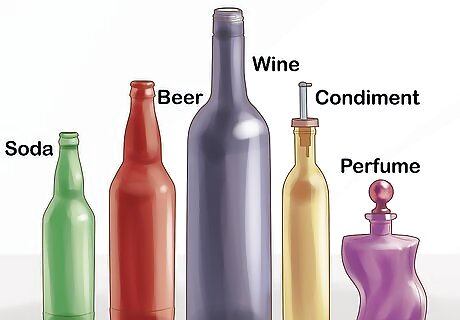
Collect and clean your old glass bottles. Any glass bottle will do for your glass art. This includes, but isn't limited to, soda bottles, beer bottles, wine bottles, condiment bottles, perfume bottles, and so on. Before your chosen bottle is ready to melt, you need to make sure it is clean and dry. This includes any labels or even fingerprints that may be on it! Labels that are difficult to remove can be soaked in hot, soapy water. A good soak for a few hours or overnight should make the labels easier to peel off. You'll also have to remove any glue that remains from the label. After a soak in hot, soapy water, you can usually scrape the glue off without much ado. A tool like a putty knife, wallpaper scraper, or an unwanted credit card can help. If your bottles have labels that appear painted, like Corona or Belvedere bottles, you can melt your bottle with these still in place. However, after melting, those labels will be permanently melted to your bottle.
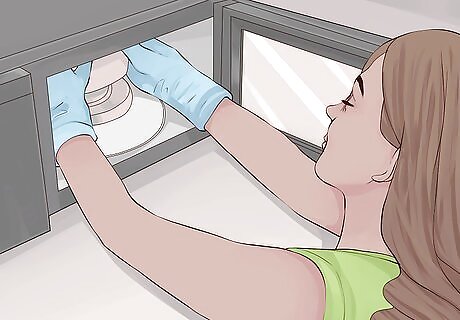
Clean your kiln. Kilns can become dirty over time, collecting dust and bits of debris from other projects. This dirtiness can have a negative impact on your kiln's heating elements and can severely shorten the working life of your kiln. To prevent an expensive and unnecessary cost to yourself, before you use your kiln you should thoroughly clean it according to the manual's instructions. While you're cleaning you'll have a perfect chance to give your kiln a quick safety inspection. Tighten any screws that seem loose, remove any flammable material from around your kiln, and verify that all kiln equipment is in good working order.
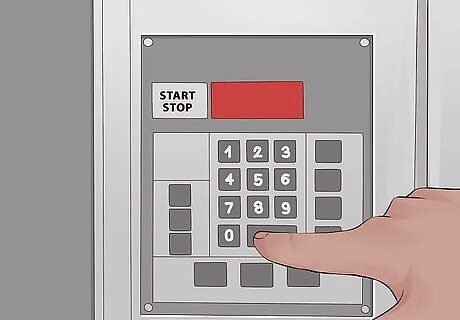
Test your kiln. To guarantee your kiln is running as desired, you should consider giving your kiln a test run. You should always use the testing materials and procedure recommended by your manual, but generally, you can test your kiln with a 04 self-supporting Witness Cone. Place one of these on each shelf about 2 inches (5 cm) away from the kiln wall. Then you should: Set your kiln to run the appropriate test setting, which will be a medium speed 04 ConeFire program if you are using an 04 cone. Allow the program to run for the complete time indicated. After the program has run and your kiln sufficiently cooled, take a look at your cones or testing material. If using a Witness Cone, you should notice a 20° bend or greater in the cone, with no cones hanging lower than the shelf. If you used other testing materials, check your manual to learn how to understand the results of your test. If after running the ConeFire program none of your cones have bent, this may be an indication that your heating element or a relay may have decayed. In this case, you may need to call a professional, like a kiln technician, to get your kiln back in working order.
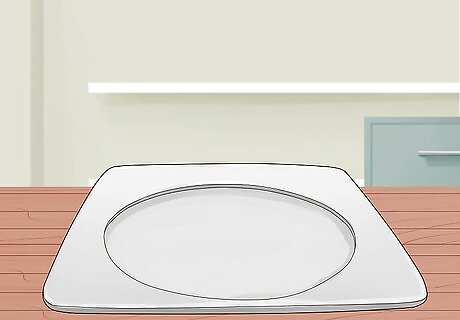
Prepare your mold and shelf, if necessary. If you don't protect the surfaces your melted glass is going to come in contact with, your glass will fuse to those surfaces. An application of kiln wash or glass separator on your shelf and mold will prevent the glass from sticking to either of these. An alternative you might use in place of a kiln wash is special kiln resistant paper, like thin-fire or fiber paper. These will also prevent your glass from melting to your kiln or molds.
Melting Your Bottles
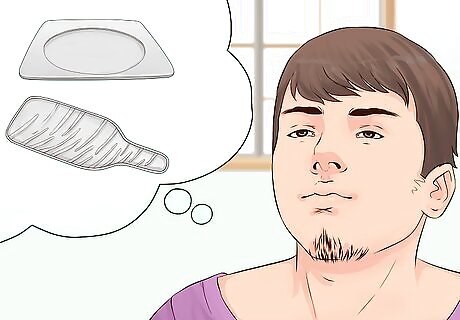
Choose between molding or slumping. Molding and slumping are the two main techniques used in glass melting. Generally, molding is where you melt your glass in a kiln and allow it to fill a mold, giving the glass a new shape. Slumping is where you allow the glass to collapse inward on itself to create a unique, freeform shape that might make a suitable table centerpiece or paperweight, among other things. You can also choose a hybrid of these two techniques. Glass slump molds are available at some art/ceramics stores and online. Using these, you can slump your glass into the approximate shape of a mold. This is great for making spoon holders, shallow bowls, and vases. EXPERT TIP Bicycle Glass Bicycle Glass Glassblowing Experts Bicycle Glass Co. was founded in 2016 by David Royce and Michael Boyd, two professional glass experts. Bicycle Glass is primarily a lighting company, committed to quality, sustainability, and affordability. All Bicycle Glass products are made of high-quality, recycled glass and are hand-blown by a dedicated team of artisans. The studio is committed to reducing its carbon footprint by conserving energy in all of its production. Using renewable wind energy to offset all electricity usage, the studio is actively working toward the goal of carbon neutrality. Bicycle Glass believes that high-quality, handmade glass products should be within reach for everyone. Bicycle Glass Bicycle Glass Glassblowing Experts Using differently shaped molds is a fantastic way to create a wide range of objects. When you use a mold, the molten glass takes on the shape of the mold, which is an effective technique for lots of glass art designs.

Determine your firing profile. A firing profile divides the heating and cooling process of your kiln into segments. Each segment requires that you change the in-kiln temperature at a certain rate, holding the temperature at certain benchmarks. The firing profile you use will influence the finished product of your glass art and will depend on the kind of glass you use. Different kinds of glass are made by different chemical processes. Some kinds of glass will react better to one firing profile better than another, so you may have to experiment before you find the best profile for your glass melting. Many firing profiles are available free online, though some may have come with the manual of your kiln. In some cases, the firing profile recommended by your kiln manufacturer might not produce good results. In this case, you'll have to tweak your profile.

Insert your glass into the kiln. Now that your bottles and kiln are clean, your kiln inspected and tested, and your surfaces covered to prevent glass from fusing, you're almost ready to melt your glass. But first, you should position your bottle stably in a central position in your kiln. If you are using a mold, it should surround your bottle or be positioned in a way that your bottle fills the mold as it melts. The best positioning will depend entirely on the kind of kiln you are using.
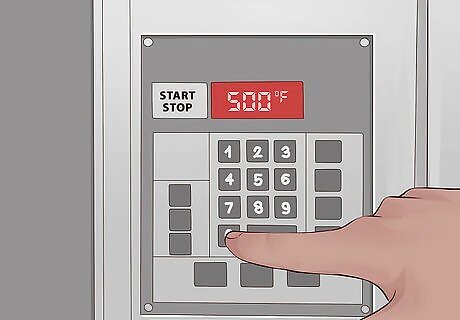
Heat your kiln. The first segment of your heating is intended to warm the bottle and should not exceed a rate of 500°F (260°C). You may even want to choose a lower rate for slower heating. This will add time to the melting process, but will protect your mold, if you are using one, from cracking because of thermal shock. As your kiln achieves the temperature indicated in each segment of your firing profile, you should hold that temperature for however long indicated in the profile. This is usually a short period of time, around 10 - 12 minutes in many cases. You should always wear the appropriate safety gear recommended by your kiln manual when operating your kiln. In many cases this will include heat resistant gloves and safety googles.
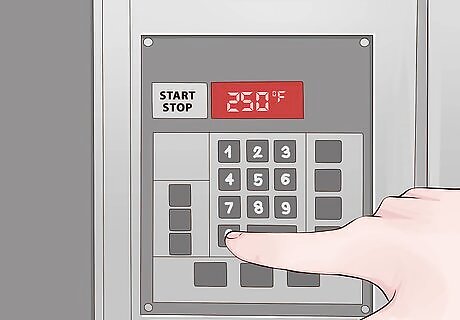
Lower your ramp rate but continue heating. After your kiln has reached 1100°F (560°C), it should be softening the glass. The thinner sections of your bottle, like the middle parts, should begin collapsing. You'll want to keep the temperature throughout the bottle consistent at this stage for best results. A lower ramp rate of about 250°F (121°C) is recommended for this purpose. The hold time, at this point, will be a little longer than preceding hold times. This longer hold time gives the temperature a chance to equalize.
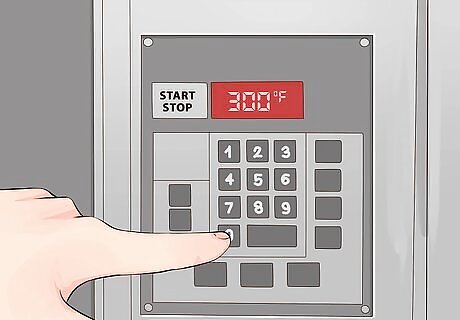
Melt the bottle as desired. At this point in your firing profile, your kiln will be reaching temperatures that should be causing the bottle to slump in earnest. From 1300°F (704°C) you should ramp at 300°F (148°C) per hour until you reach temperatures of about 1430°F (776°C). Once your kiln is at the peak temperature in your firing profile, you should allow for a hold time of about 10 minutes. Slight variations in hold time and temperature will influence the how much your bottle melts.
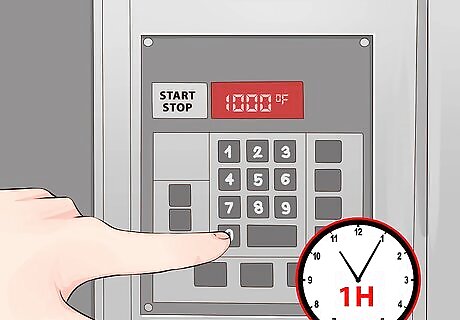
Allow your melted glass to anneal. Annealing is where you allow your glass to rest at a temperature below its freezing point, which is a little below 1000°F (537°C) for many kinds of glass. Hold this temperature for about one hour per ¼ inch (.64 cm) of thickness to relieve stress on your glass art, which will make it less prone to cracking. Once the inside of your kiln has reached room temperature, you can open it and remove your glass. Be careful when doing so, as the glass may still be hot to the touch. Opening your kiln before it has naturally cooled to room temperature may cause thermal shock. This could cause your glass to crack or shatter.
Improving Your Melting Technique

Balance rolling bottles with frit. Glass that is crushed up into small pieces is referred to as frit. If your kiln isn't level and you are having a difficult time keeping your bottle positioned as you desire, you can sprinkle some pieces of frit to either side of the bottle to prevent it from rolling. Once the bottle begins to slump, it will lose its roundness and rolling will no longer be an issue. Until then, your frit should keep your bottle in place.
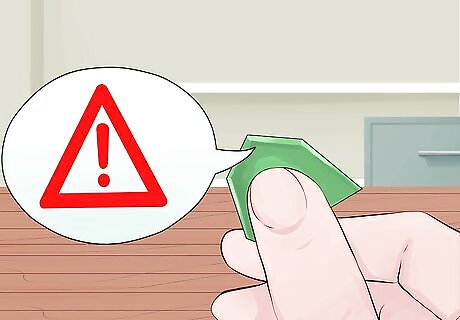
Prevent sharp, jagged edges in your melted bottle. When your glass bottle gets too hot, it can fold inward to the lower areas of your mold and create dangerous sharp edges. Decrease your peak temperature by 10° increments until you get the results you desire. You can also blunt sharp edges by decreasing your hold time. Shorten the time by 5 minutes or less in your future firings. If the sharp edges remain, continue to decrease the hold time in this fashion. In some cases, you may have the best results by lowering your temperature and shortening your hold time. You'll have to experiment to find what works best for the glass and kiln you are using.
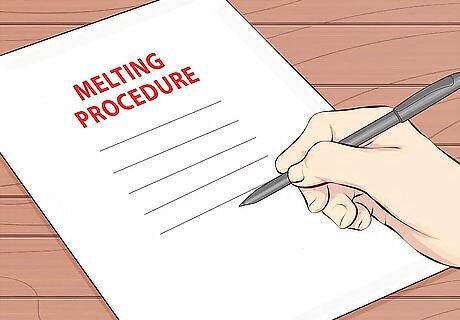
Take notes on your melting procedure. Melting glass is a very precise process. Even the difference of a few degrees or minutes can completely change the outcome of your glass art project. You should pay special attention to temperature, hold times, ramp rates, and the kind of glass you are melting.

Perfect your glass melting technique. There are many small factors that can have a significant affect your glass melting. The time you hold your temperature benchmarks, the rate of increase/decrease in temperature, the number of bottles you're trying to melt in a single firing -- all of these factors play a part in how your glass melts. But with a little time and practice, you'll soon be creating beautiful glass art melting bottles. Alternatively, instead of melting old glass bottles and jars you can use them for organization. Keep them in your bathroom to organize lipsticks, hair ties, and other things. Or use them to manage all your office supplies.



















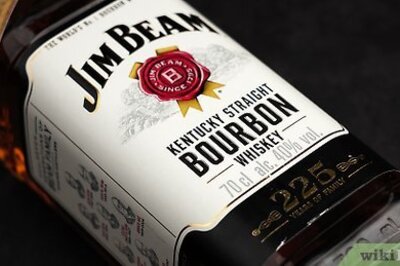
Comments
0 comment